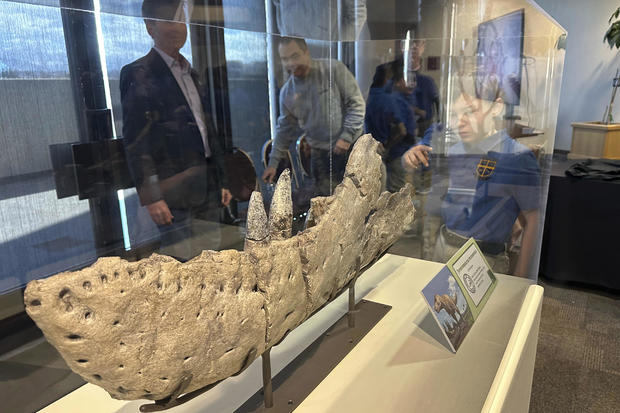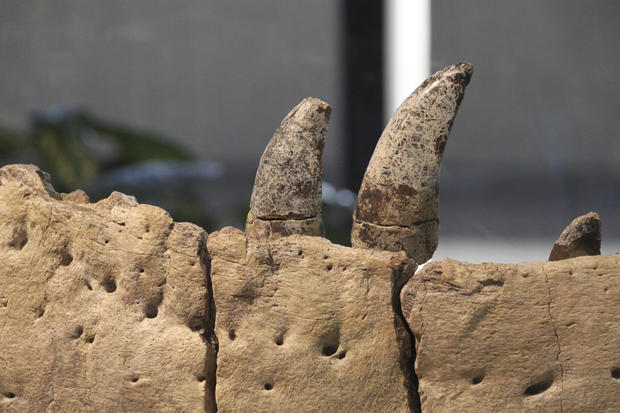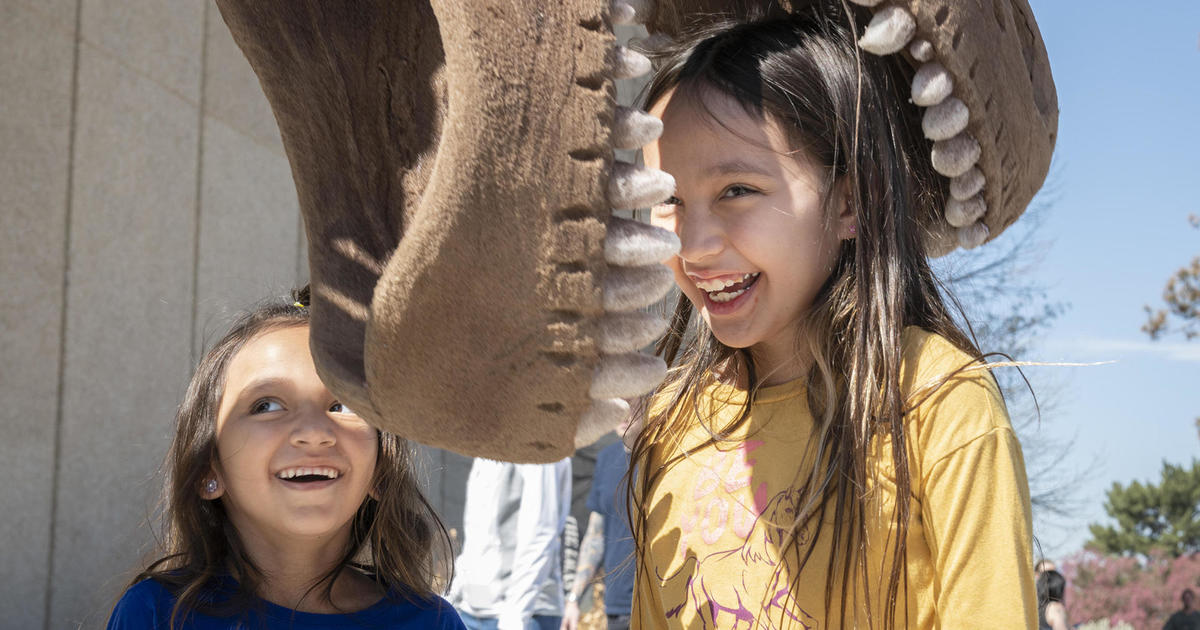T. rex fossil unearthed decades ago is older, more primitive relative of iconic dinosaur, scientists say
The Tyrannosaurus rex seemingly came out of nowhere tens of millions of years ago, with its monstrous teeth and powerful jaws dominating the end of the age of the dinosaurs.
How it came to be is among the many mysteries that paleontologists have long tried to solve. Researchers from several universities and the New Mexico Museum of Natural History and Science say they now have one more piece of the puzzle.
On Thursday, they unveiled fossil evidence and published their findings in the journal Scientific Reports. Their study identifies a new subspecies of tyrannosaur thought to be an older and more primitive relative of the well-known T. rex.
There were ohs and ahs as the massive jaw bone and pointy teeth were revealed to a group of schoolchildren. Pieces of the fragile specimen were first found in the 1980s by boaters on the shore of New Mexico's largest reservoir.
The identification of the new subspecies came through a meticulous reexamination of the jaw and other pieces of the skull that were collected over years at the site. The team analyzed the specimen bone by bone, noting differences in numerous features compared with those synonymous with T. rex.
"Science is a process. With each new discovery, it forces us to go back and test and challenge what we thought we knew, and that's the core story of this project," said Anthony Fiorillo, a co-author of the study and the executive director of the museum.
The differences between T. rex and Tyrannosaurus mcraeensis are subtle. But that's typically the case in closely related species, said Nick Longrich, a co-author from the Milner Centre for Evolution at the University of Bath in the United Kingdom.
"Evolution slowly causes mutations to build up over millions of years, causing species to look subtly different over time," he said.
The analysis — outlined Thursday in the journal Scientific Reports — suggests the new subspecies Tyrannosaurus mcraeensis was a side-branch in the species' evolution, rather than a direct ancestor of T. rex.
The researchers determined it predated T. rex by up to 7 million years, showing that tyrannosaurs were in North America long before paleontologists previously thought.
With no close relatives in North America, co-author Sebastian Dalman wanted to reexamine specimens collected from southern New Mexico. That work started in 2013 when he was a student.
"Soon we started to suspect we were on to something new," Dalman said.
T. rex has a reputation as a fierce predator. It measured up to 40 feet long and 12 feet high. Dalman and the other researchers say T. mcraeensis was roughly the same size and also ate meat.
Thomas Richard Holtz, a paleontologist at the University of Maryland who was not involved in the study, said the tyrannosaur fossil from New Mexico has been known for a while but its significance was not clear.
One interesting aspect of the research is that it appears T. rex's closest relatives were from southern North America, with the exception of Mongolian Tarbosaurus and Chinese Zhuchengtyrannus, Holtz said. That leaves the question of whether these Asian dinosaurs were immigrants from North America or if the new subspecies and other large tyrannosaurs were immigrants from Asia.
"One great hindrance to solving this question is that we don't have good fossil sites of the right environments in Asia older than Tarbosaurus and Zhuchengtyrannus, so we can't see if their ancestors were present there or not," Holtz said.
He and the researchers who analyzed the specimen agree that more fossils from the Hall Lake Formation in southern New Mexico could help answer further questions.





